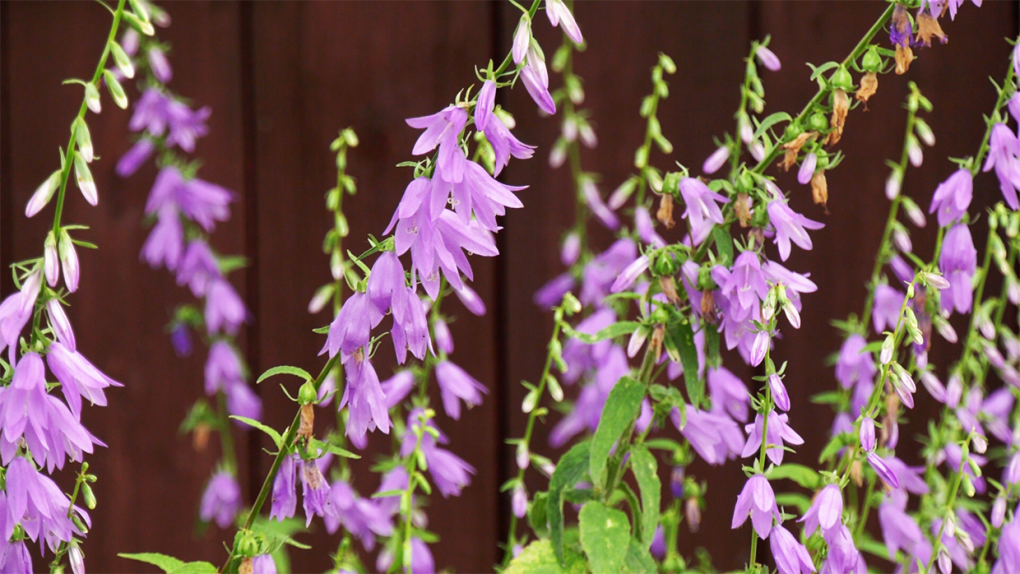Battling Creeping Bellflower: A how-to guide on identifying, removing, and disposing the invasive weed

Zombie weed season is here. Soon we’ll start to see the familiar beautiful purple bellflower blooms around Westgate. They’re not uncommon to see in our pedestrian pathways, alleys and even in our neighbours gardens. This invasive plant may seem harmless at first glance, but it can quickly take over your garden and lawn if left unchecked. In this post, we’ll delve into what Creeping Bellflower (Campanula rapunculoides) is and provide you with tips on how to properly remove and dispose of it.
The City of Calgary has additional resources dedicated to identifying and removing Bellflower. If you spot Bellflower in any public spaces, please report it to the city via 311 or use the 311 app.
What is Creeping Bellflower?
Creeping Bellflower , also known affectionately as zombie weed due to it’s incredibly resilient root system, is a perennial weed that is native to Europe and Asia. It has naturalized in many parts of North America, including Calgary, and is considered an invasive species due to its aggressive growth and ability to crowd out native plants.
Identifying Creeping Bellflower:
- Leaves: The leaves are heart-shaped with serrated edges and can be anywhere from 2 to 8 inches long.
- Flowers: The bell-shaped, violet-blue flowers grow on tall, slender stems and bloom from late spring to early summer.
- Roots: Creeping Bellflower spreads through underground rhizomes, which can make it challenging to eradicate.
Why is Creeping Bellflower a Problem?
While Creeping Bellflower may appear attractive, its invasiveness can harm your garden and the surrounding environment in several ways:
- Competes with Native Plants: It outcompetes native species for resources like water, sunlight, and nutrients, reducing biodiversity.
- Difficult to Eradicate: Its extensive root system makes it challenging to eliminate completely.
- Spreads Rapidly: Creeping Bellflower can spread through seeds and rhizomes, quickly taking over an area if not controlled.
How to Remove Creeping Bellflower Properly:
- Wear Protective Gear: Put on gloves and long sleeves to protect your skin from potential irritation.
- Dig It Out: Use a shovel or garden fork to carefully dig around the plant, ensuring you get as much of the root system as possible.
- Dispose of It Correctly: Place the entire plant, including the roots, into a heavy-duty garbage bag. Seal the bag tightly to prevent any spread of seeds or rhizomes.
- Do Not Compost: Do not put Creeping Bellflower in your compost pile, as it may continue to grow and spread.
- Monitor for Regrowth: Keep an eye on the area for any regrowth and repeat the removal process as needed.
- Consider Chemical Control: As a last resort, you can use herbicides specifically designed for perennial weeds. Follow the manufacturer’s instructions carefully.
Preventing Creeping Bellflower Reinfestation:
- Improve soil health and promote the growth of desirable plants in your garden.
- Regularly inspect your garden for any signs of Creeping Bellflower and address it promptly.
- Mulch your garden beds to discourage weed growth.
By taking these steps, you can effectively manage and prevent the spread of Creeping Bellflower in your garden and help protect Calgary’s natural environment.
Remember, community effort is essential in managing invasive species like Creeping Bellflower. Share this information with your neighbors and encourage responsible gardening practices to keep our community vibrant and healthy.



